Faith on Canvas: The Most Iconic Religious Paintings from Around the World
- Religious Narratives in Art
- The Top 10 Religious Paintings of the Renaissance
- Leonardo da Vinci, Virgin of the Rocks (1483 - 1486)
- The Last Supper (1495 - 1498) by Leonardo da Vinci
- The Creation of Adam by Michelangelo
- Disputation on the Holy Sacrament by Raphael (1509-1510)
- Sistine Lady (1512-1513) by Raphael
- Michelangelo's The Last Judgement (between 1536 and 1541)
- The Conversion of Saint Paul (1600), by Caravaggio
- Coronation of the Virgin (1641-1644) by Diego Velazquez
- Return to the Prodigal Son (1663-1669) by Rembrandt
- The Immaculate Conception of Los Venerables (c. 1678) By Bartolome Esteban Murillo
- FAQ
Religion and art have long been closely connected. Some of the greatest artists throughout history incorporated religious themes into their art as an important form of self-expression. In this way, they attributed appreciation among those with Christian or Catholic beliefs. This article presents 10 Christian paintings considered iconic.
Religious Narratives in Art
Many iconic Western religious paintings draw their subject from biblical stories such as Adam and Eve's Fall from Grace or Jesus' Death and Burial. Religious paintings depict subjects that convey spirituality through moral narratives.
While Europe saw great strides toward developing this art during the Renaissance period, many famous religious pieces we encounter today were created during this timeframe.
The Top 10 Religious Paintings of the Renaissance
Many Renaissance masters, like Leonardo da Vinci or Michelangelo, featured religious imagery in their works of art during this period. In this article, we will showcase 10 iconic religious paintings worth your attention.
Leonardo da Vinci, Virgin of the Rocks (1483 - 1486)
Let’s start with Leonardo Da Vinci. He created his iconic Christian painting Virgin of the Rocks between 1483 and 1486 as an expressionist masterpiece. He depicted Mary with Christ's child alongside John the Baptist's infant, one of two paintings with similar compositions and themes by Da Vinci.
As its title indicates, this painting depicts a scene set against a rugged landscape. Additionally, Da Vinci displayed his skill with using sfumato in this masterpiece. It is an artistic technique for softening transitions between colors.
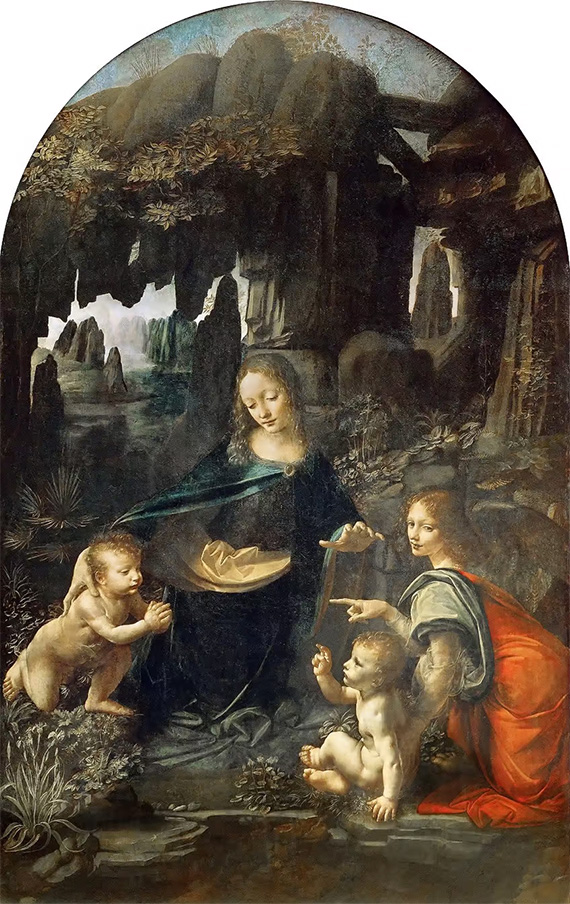
You can see this version of Madonna on the Rocks at both the Louvre in Paris and the National Gallery. Many art historians consider the Louvre piece the oldest version since it first surfaced in 1625 in records for France's royal collection.
Hypotheses suggest that Da Vinci sold this painting and that its version at the National Gallery may have been created following an order from Milan in 1483.
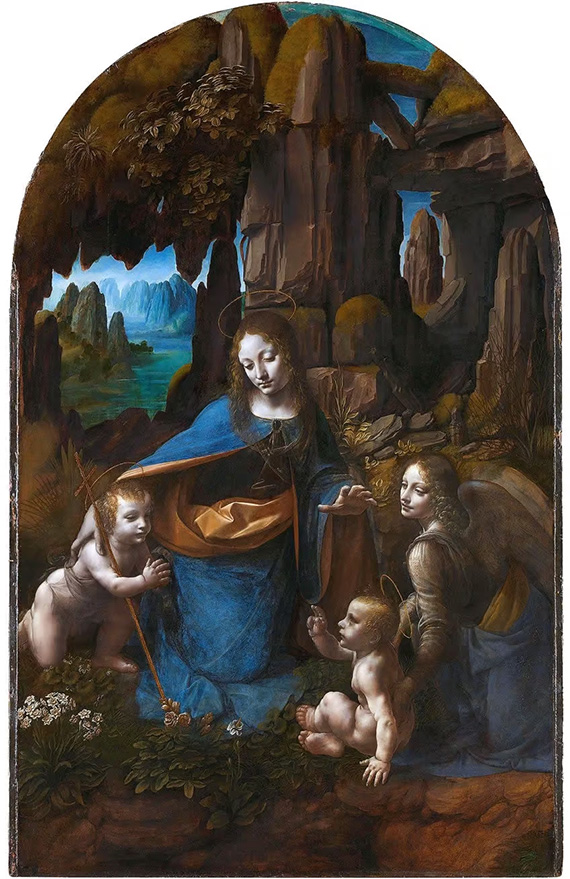
John the Baptist adoring Jesus Christ - which forms the subject of this painting - did not take place as recorded in scripture. According to Matthew's Gospel, Joseph (Mary's husband) received a warning through a dream from King Herod, who attempted to assassinate Jesus. Joseph, therefore, fled with Mary and Jesus's family into Egypt for safety.
John the Baptist, Jesus' cousin, lived close by in Bethlehem. As you may know, the Innocents Massacre occurred at that place.
King Herod issued an order in the Book of Matthew to execute all male infants within his domain, leading Uriel and John into Egypt, where they met up with a holy family.
The Last Supper (1495 - 1498) by Leonardo da Vinci
Leonardo Da Vinci created one of his most renowned religious paintings, The Last Supper between 1495 and 1498. This painting depicts Jesus Christ eating his last meal before He was arrested and crucified. This extremely significant event marked that one of His disciples would ultimately betray Him before Holy Communion took place later that night.
This painting was produced using media that allowed for editing and alteration. This reduced the longevity of the masterpiece. In turn, it caused the need to do multiple restorations of the picture to regain its original image.
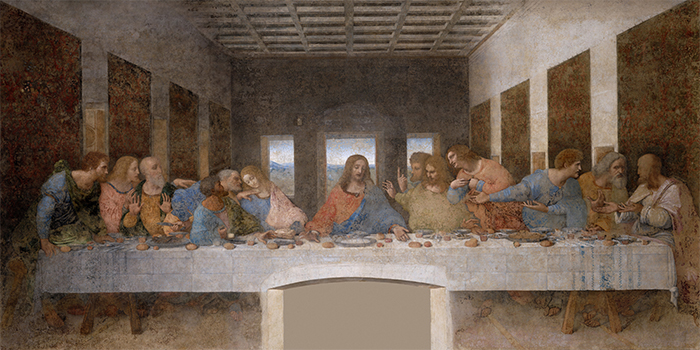
Previous imagery depicted each apostle's reaction to Jesus' announcement. Judas Iscariot is shown holding what may have been payment for betraying him.
This famous religious painting has also made appearances in popular culture parodies like "Quo Vadis", "The X-Files", and "The Simpsons".
The Creation of Adam by Michelangelo
Michelangelo Buonarroti painted The Creation of Adam between 1508 and 1512. It remains one of the most beloved biblical paintings. Buonarroti was one of Italy's best-known High Renaissance painters and is well known for works depicting religious themes. Adam's Creation illustrates this story by describing God with a white beard covered by a swirling cloak while Adam stands bare.
Behind God lies an anatomically accurate image of his brain. This is one of the more inconspicuous elements in the painting.
This painting's most striking image depicts God reaching down toward Adam to give life, with His garment representing a uterus and a green scarf as an umbilical cord. Altogether, this depiction becomes Adam's birth.
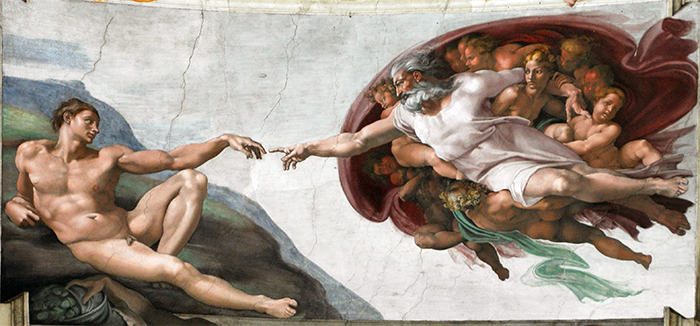
Disputation on the Holy Sacrament by Raphael (1509-1510)
Renowned 16th-century Italian painter Raphael was celebrated for expressing Neoplatonic beliefs regarding humanity's magnificence through religious paintings such as The Disputation of Holy Sacrament by Raphael. This classic scene captures it all.
This fresco, commissioned by Vatican City Apostolic Palace as part of their decor plan for what once served as the private library of the Supreme Papal Tribunal congregation, was an immense work.
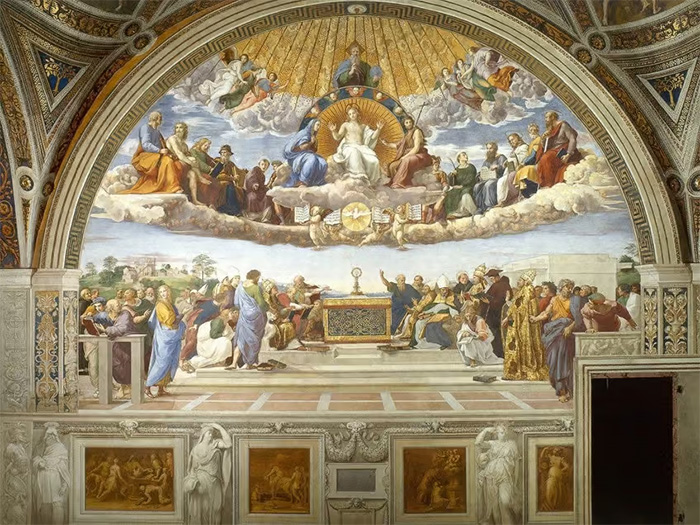
Raphael depicted a familiar scene for large-scale frescoes of his time. Christ is displayed with an aura or luminous cloud often associated with religious figures. Jesus, Mary, and John Baptist sit arranged into Deesis. This arrangement is utilized in Byzantine Art that symbolizes Christ, Mary, and John respectively.
This fresco depicts Peter, Adam, King David, and John the Evangelist. John is seen here wearing his sandals.
This painting depicts God engulfed by a golden light engulfing them. His left arm holds Earth and is surrounded by angels. A dove symbolizes the Holy Spirit is at Christ's feet.
Disputa (commonly referred to by its Italian title "Divulta") also symbolized Christianity's triumph over philosophy. This evidence could be found on its counterpart wall from Raphael's fresco depicting such victory can be seen by its opposite wall location.
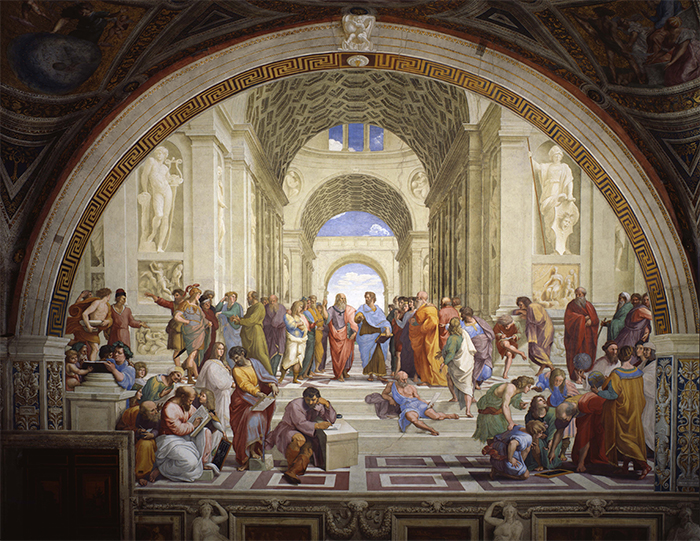
Sistine Lady (1512-1513) by Raphael
Raphael created many of the finest paintings of the Italian High Renaissance. One of his best-known religious paintings is the Sistine Madonna (1512-1513) by Raphael. It depicts Christian art from 16th Century Italy and was commissioned by Pope Julius II after Piacenza joined the papal states.
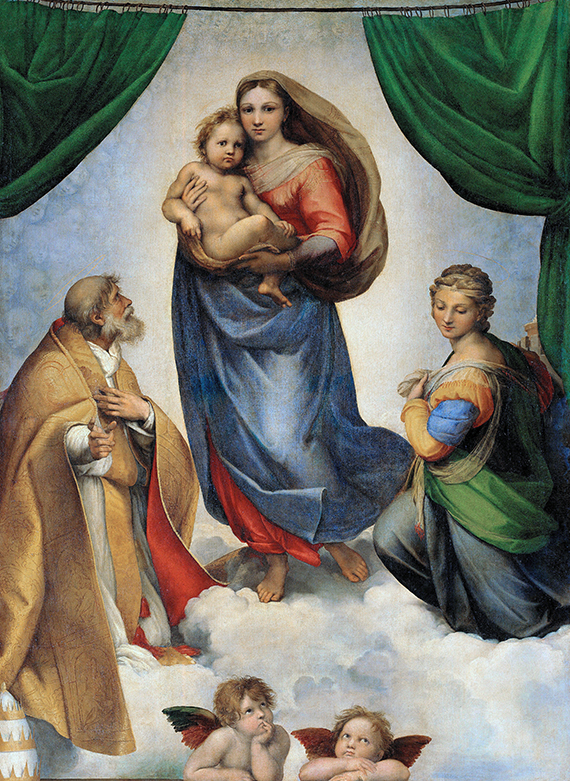
The Virgin is depicted here walking toward Earth while holding Jesus close. The blue skies are filled with numerous angels in the background. Pope Sixtus II is ready to help guide her towards earthly matters while St Barbara (a third-century martyr) stood alongside Pope Sixtus II on an altar at San Sisto church. They were often featured prominently in the Christian art of their time.
Raphael added two cherubs as the final touch to enhance its composition and complete his painting. This move further strengthened it.
Michelangelo's The Last Judgement (between 1536 and 1541)
Michelangelo Buonarroti stands as one of the greatest Renaissance painters ever known, inspiring many others with his legacy and art. Michelangelo wasn't limited to sculpture, though. Pope Clement VII asked him to paint The Last Judgment at the Sistine Chapel, one of history's most well-known religious paintings!
This fresco depicts Jesus Christ's second coming and God's judgment of humankind at its end.
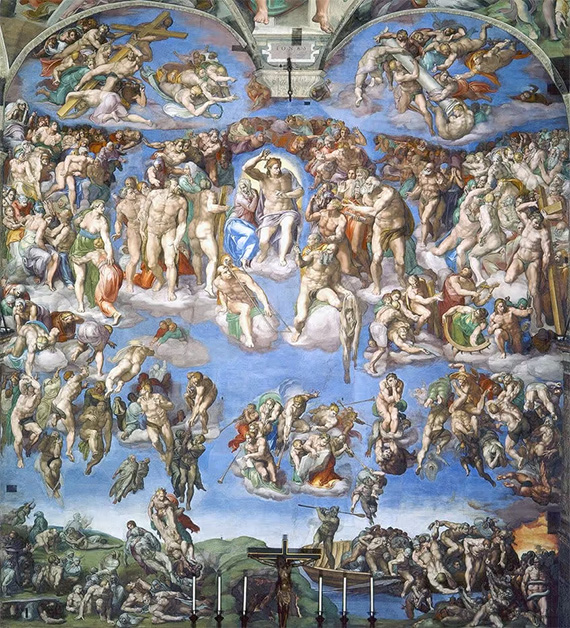
This painting depicts the resurrection and descent into hell of dead souls who had died, drawing much controversy due to its depiction. Many consider this piece one of the most significant religious works ever painted.
Michelangelo was widely accused of mixing Pagan mythology and Christian narratives into one complex tale, showing his artistic proclivities over its accuracy at that time. It was something considered quite unorthodox then.
The theme of the Last Judgment became increasingly prominent within Christian art and frequently appeared in large frescoes. Artwork depicting such serious subjects reminded Christians about what awaits them should they leave the faith altogether.
The Conversion of Saint Paul (1600), by Caravaggio
Caravaggio's famous Catholic painting The Conversion of Saint Paul from 1600 depicts one of the pivotal moments in Paul's life when he made up his mind to stop persecuting early Christians, instead becoming one of Jesus Christ's followers.
Caravaggio painted The Conversion of Saint Paul as one of two biblical works on its subject in September 1600 as per its provenance. Monsignor Tiberio Ceris ordered it after Monsignor Cerasi, Treasurer General for Pope Clement VIII, rejected two earlier drafts commissioned to paint.
Cardinal Giacomo Sannessio may have written early versions of The Conversion of Saint Paul; however, many scholars now use an alternate text they believe to be original.
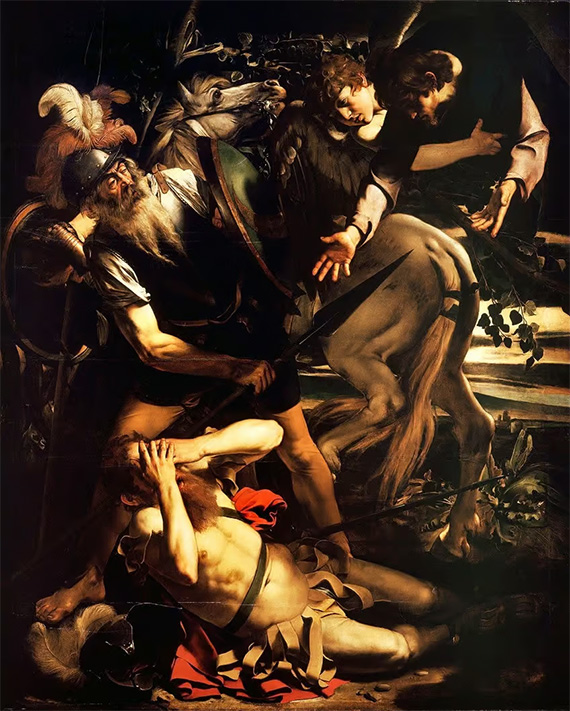
This painting tells the biblical tale of Saul, who attempted to destroy Christian communities in Damascus before becoming blinded by Christ's voice questioning him about his bad deeds and prompting a "brilliant" light when hearing His condemnations of them.
Helen Langdon's biography of Caravaggio described his art style as an amalgam of Raphael's and rustic realism (clumsy rustic realism).
Caravaggio was widely revered during his lifetime for producing many masterpieces of Baroque painting from the 16th century. He also became known as one of art history's most controversial figures of that era. Caravaggio created such works as Calling St Matthew (1599 to 1600) and Beheading Saint John the Baptist (1598 to 1600).
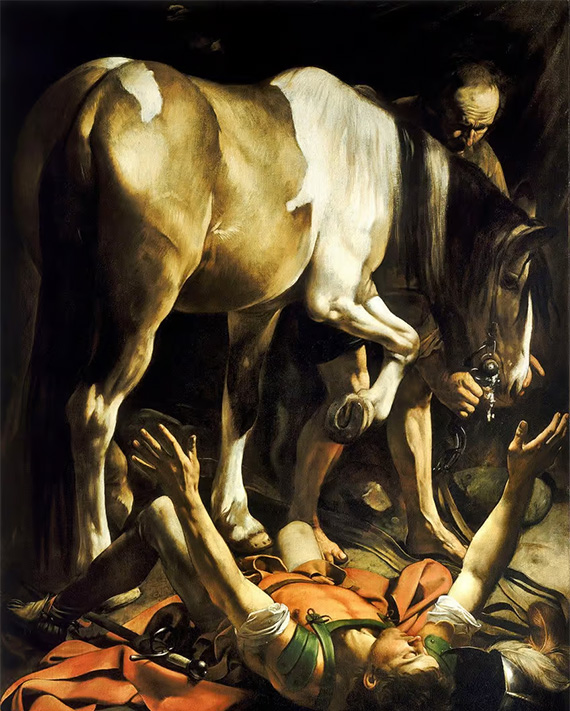
Coronation of the Virgin (1641-1644) by Diego Velazquez
Coronation of the Virgin (1641-1644) by Diego Velazquez stands out among his religious paintings as one rare religious piece. It depicts Mary modestly looking back towards herself while looking down towards Jesus and being crowned by him. There are multiple cherubs surrounding the figure on top, creating an abstract triangle to depict their Holy Trinity.
Velazquez used carmine hues instead of the more common red to distinguish his paintings and make them stand out.
Mary pointing toward her heart evokes an inverted triangle between Christ and God. This painting is an outstanding religious portrait that displays harmony and balance.
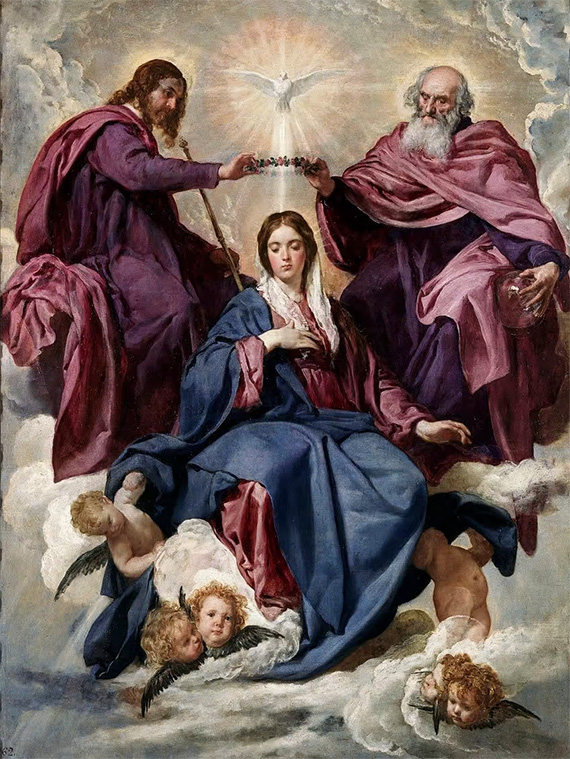
Return to the Prodigal Son (1663-1669) by Rembrandt
Rembrandt's Return of Prodigal Son (1663-1669) is one of Christian theology's iconic parables. This story tells of a father giving away an inheritance to his son. After leaving home and spending it lavishly, however, the son eventually returns after experiencing poverty and illness.
He eventually reconciled with his family again after repenting of his earlier sins. His father forgave him outright. That’s a part of this parable that reinforces God's mercy by forgiving those who ask forgiveness from them. These lessons are learned in both the narrative and the biblical principle. Any repenting individual or any repenting soul will receive God's mercy upon repenting!
Rembrandt van Rijen made history when he painted The Return of the Prodigal Son by depicting its return, declaring: 'We should rejoice: This son has come home after having been dead for so long."
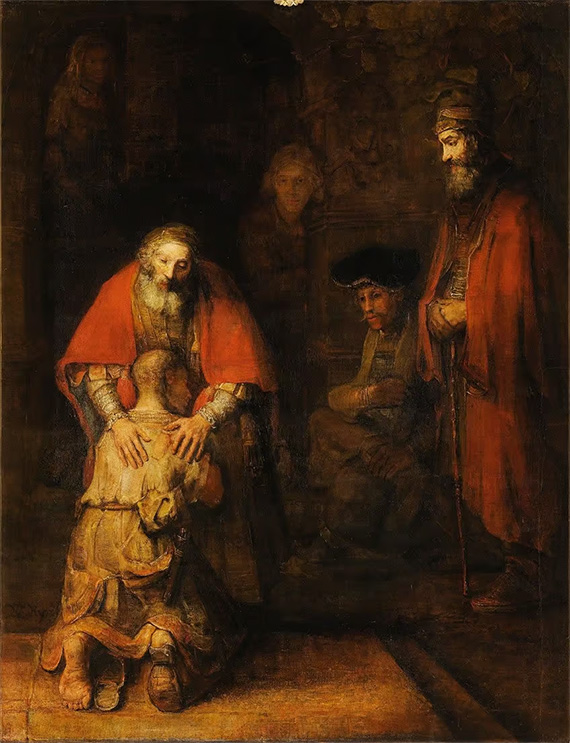
The Immaculate Conception of Los Venerables (c. 1678) By Bartolome Esteban Murillo
The Virgin Mary is often depicted as a biblical figure in many religious and Catholic paintings. Immaculate Conception of Los Venerables shows the Virgin Mary in a white robe, with illumination from the sun and moon behind her. Many rosy-cheeked angels surround Mary as she crosses her arms over her chest and wears a blue mantle.
Spanish Baroque painter Bartolome Esteban Murillo painted the famous religious painting of the Virgin Mary. He was commissioned to do so by Justino De Neve.
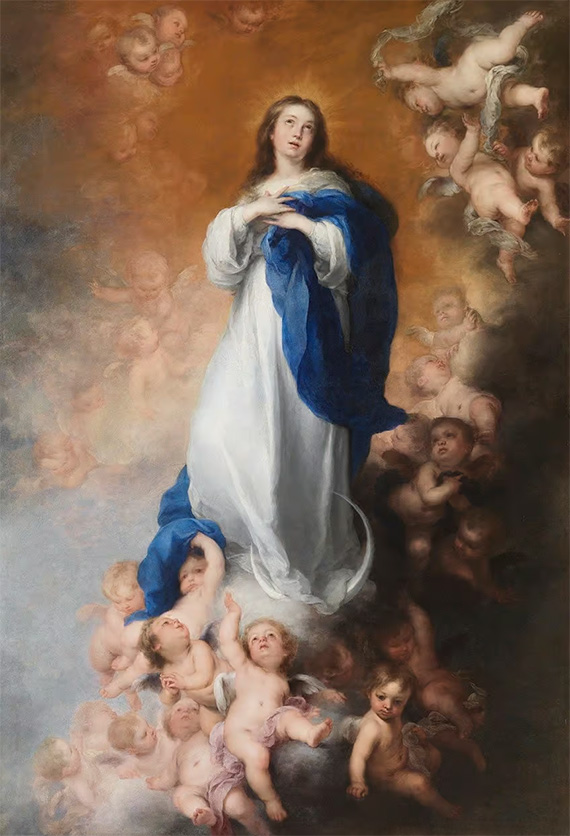
Throughout the 16th century, the Catholic belief in an immaculate conception became popular in Spain and was at the forefront of Spanish dogma. In 1854, the conception of the Virgin Mary was officially recognized as an essential symbol of culture for Spain.
The painting was stolen by Marshal Jean-de-Dieu Soult during the Peninsular War of 1813 and transported to France. The picture was sold at auction in 1852 to the Louvre Museum in Paris, where it remained until 1941. The artwork's popularity declined, and was eventually returned to Spain at the Museo del Prado.
Religious art is not only for Christians. These religious paintings show the talent of the Renaissance's greatest artists, who created some of the most iconic biblical images. Many famous Catholic paintings use iconography to bring to life biblical scenes, which continue to inspire many. Therefore, art is crucial in the establishment of such belief systems. What is your favorite religious painting?
FAQ
What was the Purpose of Religious Art?
Religious artworks were created to decorate sacred spaces but also to help establish faith in certain belief systems. They did this by displaying admiration and respect for important religious stories. Religious art also demonstrates the influence of religion on society. To a certain extent, religious artworks were worshipped as a gateway between the heavens, the earth, and God so that sacred places felt more connected with God.
Who are the Most Prominent Religious Artists of the Renaissance?
Raphael is the most famous religious painter of the Renaissance. Michelangelo and Leonardo da Vinci followed him. Gian Lorenzo Bernini and Caravaggio were also popular.
What is the most famous religious painting?
The Creation of Adam by Michelangelo Buonarroti (1508-1512) is the most famous religious work.
No Comments Yet...